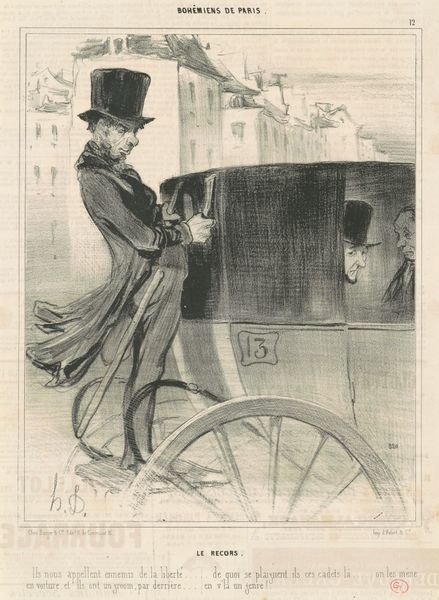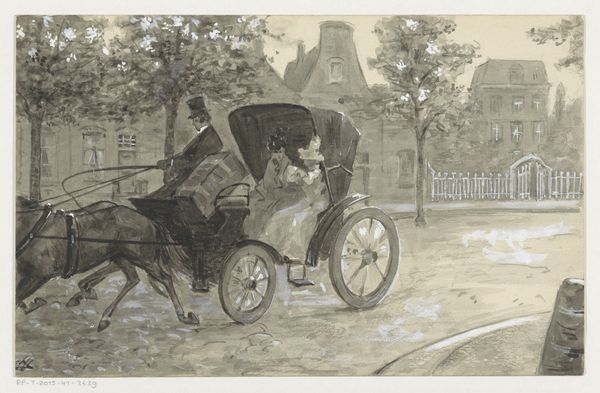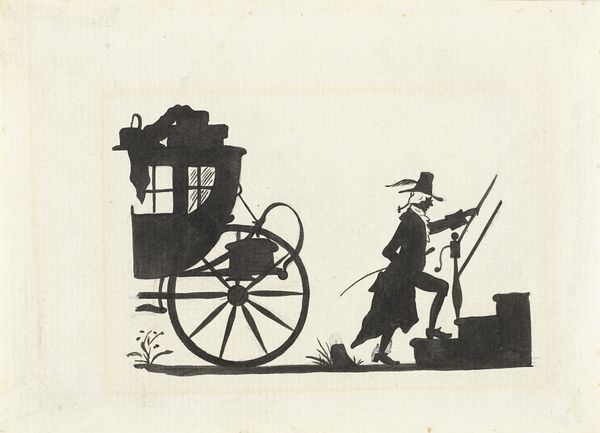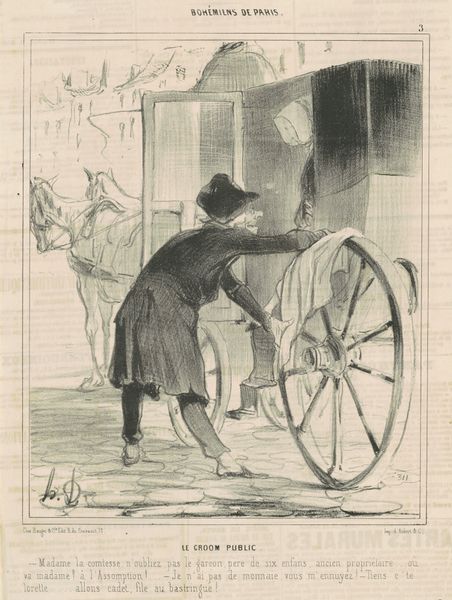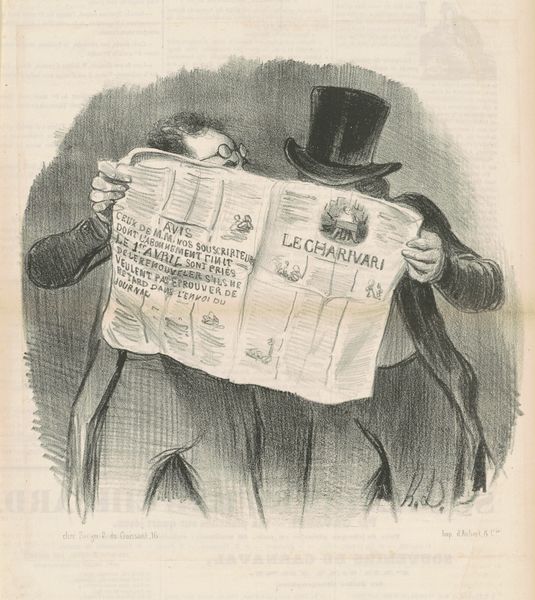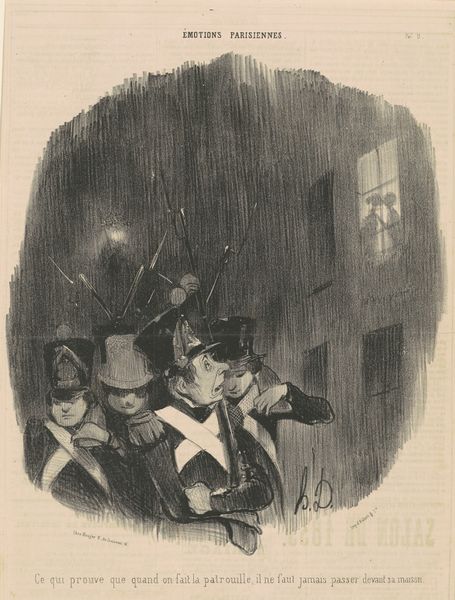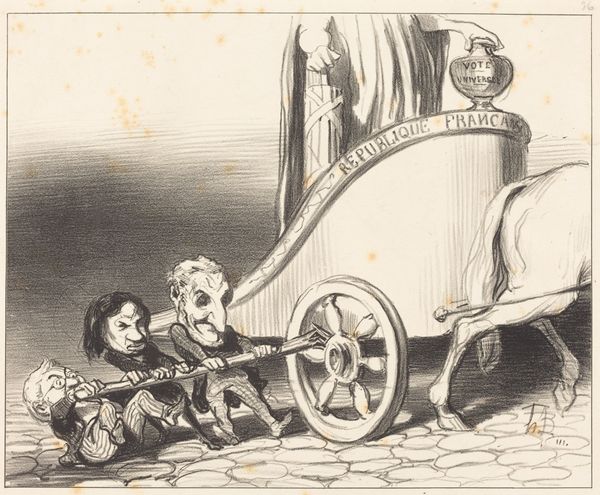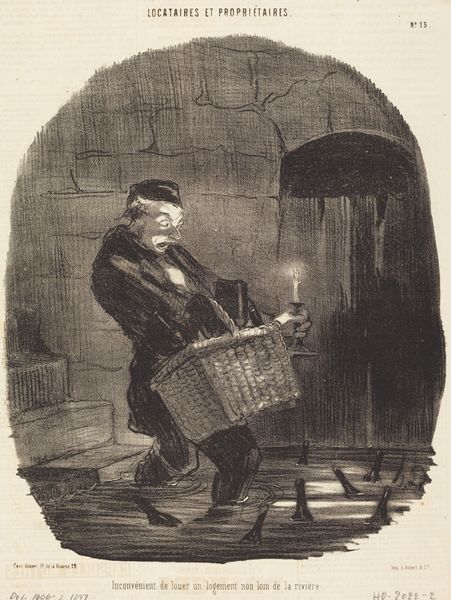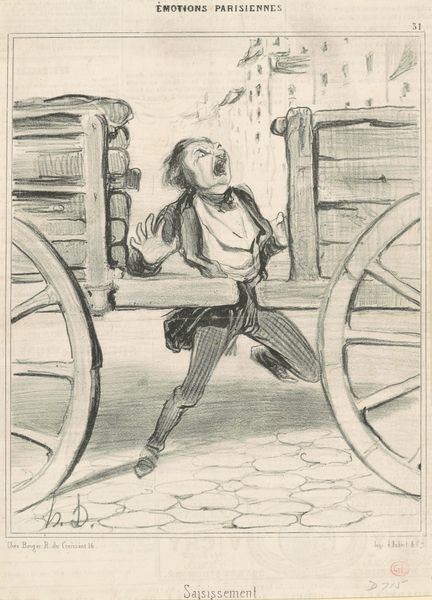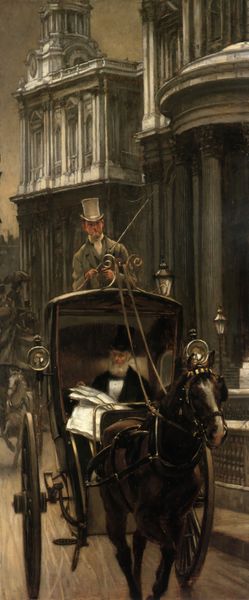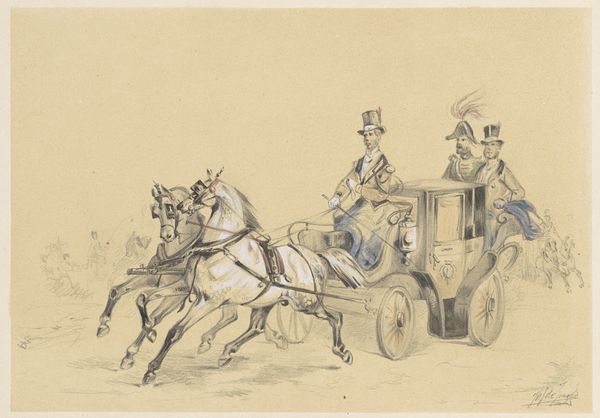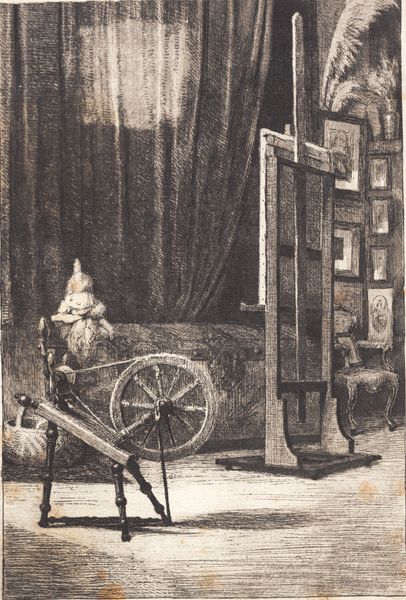
drawing, lithograph, print
#
drawing
#
lithograph
# print
#
caricature
#
romanticism
#
genre-painting
Copyright: National Gallery of Art: CC0 1.0
Editor: This is Honoré Daumier's 1841 lithograph, "Ah! très bien j'en suis sur! malheureuse…", which roughly translates to "Ah! I'm sure that's it! Unhappy woman…". The hurried scene and the man's almost desperate expression create a comical tension. What stands out to you about this piece? Curator: Daumier’s lithographs often served as social commentary. Considering the historical context, Paris in the 1840s was teeming with social anxieties. The rising bourgeoisie, political instability... Daumier captures the era's undercurrents. That frantic figure pursuing the carriage, he isn’t merely chasing someone; he’s emblematic of a society obsessed with status and maybe lost love. The carriage itself, marked with the number 13, introduces an element of superstition or perhaps fate playing a cruel trick. What do you think the artist tried to tell by using a print for this artwork? Editor: It must have helped reaching a wider audience at that time! Did that provoke debate among social classes? Curator: Precisely. Printmaking democratized art and opinion. Daumier could bypass the established Salon system and directly engage the public through satirical journals like 'Le Charivari.' His work wasn't just aesthetically pleasing; it was part of a larger socio-political dialogue that shaped public consciousness. By using caricature, it could denounce certain aspects of society such as obsession, as you noticed at the beginning. Do you think that today an artist could make a print denouncing something, to reach more people, like Daumier used to do? Editor: Definitely! Digital art and social media make it easy for modern artists to spread messages quickly, like Daumier did back then! Curator: It's interesting to consider those historical echoes within our own art landscape.
Comments
No comments
Be the first to comment and join the conversation on the ultimate creative platform.
